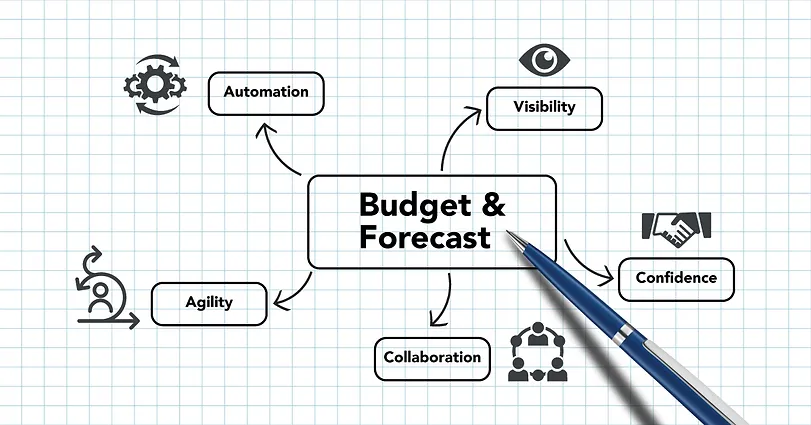While spreadsheets have long served as the foundation for many organizations’ budgeting and forecasting, the shortcomings of this legacy, siloed tool have become too big to ignore. Relying on outdated spreadsheets to lead complex business models inevitably disadvantages your organization, sacrificing time and accuracy while impeding strategic decision-making. As we dive into this new year, we ask you to think about how you may enhance your overall budgeting and forecasting process, particularly as organizations face new, unique objectives and problems in the post-pandemic world.
To evaluate whether the tools you have in place are working for you and not making the process more difficult, slower, or inaccurate, start by asking yourself the following five key questions. Consider this an opportunity to make a difference, not just for the long-term success of your company, but also to finally achieve the ever-elusive peace of mind that you and your team deserve.
5 Key Questions to Consider About Your Budgeting and Forecasting Process
Visibility – How can I get the most detail and accuracy out of my budget? Do we have the data we need readily available?
The accuracy of the budgeting and forecasting process is crucial. Spreadsheet programming does not enforce the accurate flow of transactions throughout the model. Users have complete control over the formulas and flow, which means they may inadvertently violate your business logic and/or accounting norms.
Such errors are avoided by using a modern FP&A system with pre-programmed business logic and accounting rules. Within a menu-driven environment featuring drop-down lists and tables, users select from each budget area, for each budget line item, either globally or individually, and are empowered to select unique defaults, drivers, and other logic. These tools then apply and convey the logic throughout the model in an automated and accurate manner.
Confidence – Am I confident in the numbers coming out of the model? How valuable is my budget for managing the business next year? How can we plan for an uncertain economy?
Freed from the shackles of a siloed and managed instead within strategic FP&A solutions, budgets become living, evolving documents that finance teams can use as an in-house planning tool, updating monthly, quarterly, or on an ad-hoc basis. These tools provide you with an accurate forward-looking perspective of your company’s general ledger, allowing you to accomplish the following tasks quickly and easily:
- What-if scenarios
- Forecasting
- Budget vs. actual performance reporting
Furthermore, with the click of a button, you can transform that data into comprehensive and user-friendly reports with as much or as little detail as needed. Visual dashboards enable your management team to monitor real-time performance against the objectives outlined in your company strategy. Think about it: can your spreadsheet manage that?
Collaboration – How do we create more collaboration across the organization for teams to operate and submit their own budgets? Who should be involved? Does everyone involved understand their responsibilities?
It is difficult for finance to see every detail and every driver. For a thorough understanding of performance, strong collaboration across the organization is required. Collaboration tools are also vital to business success as a distributed and remote workforce becomes the norm.
Across all business functions, flexible, cloud-based tools are essential to seamlessly share information and insights, and budgeting and forecasting are no exception. Spreadsheets were not designed to meet and sustain the demands of today’s business requirements.
By relying on cloud-based planning and analytics tools, collaboration is simple and seamless across the organization. As each contributor inputs financial and transactional data, the changes are automatically reflected in the budget. All necessary fields, accounts, and ledgers are updated, linking all data into a single cloud-based, centralized database and guaranteeing that everyone sees the same financial data or whichever portion of the data they desire. That includes everything from the simplest operational details to the most comprehensive financial roll-ups. Financial leaders and C-level executives have access to detailed information from all areas of the business, which is constantly updated in real-time without the need for manual data collection or consolidation.
Furthermore, modern FP&A solutions encourage greater communication between operations and finance. There’s also more top-to-bottom collaboration; importing actual results enables continuous plan comparisons, bridging the gap between strategic and operational plans. In short, everyone sees a single version of the truth.
Agility – Is it possible for me to run as many what-if scenarios as I need? How easily can I create and track an accurate budget from the plan?
If anything, the past two years have taught us that being prepared for all scenarios is critical to long-term business success. Financial professionals need the ability to quickly and simply make modifications to a model in order to test the impact of numerous scenarios. This potential is limited by stubborn spreadsheets, which make it difficult to deploy strategic changes – or pivots – across the organization.
Modern FP&A solutions ensure that every part of the model complies – and adjusts – to your business logic and accounting rules automatically. Because it’s pre-programmed, the coding behind the model will never break. Unlike spreadsheets, which need you to edit the underlying model in order to ensure that formulas remain valid, modern FP&A solutions allow you to simply delete and add, and the model adapts itself.
These pre-programmed rules promote maximum flexibility, allowing you to apply them wherever they are needed. This means you can test any scenario or plan with complete confidence, knowing that your budget will always produce accurate forward-looking balance sheets, cash flow statements, and P&L predictions that are in sync with your underlying budget.
Automation – How can we be proactive, rather than reactive, in planning?
In the wise words of Ben Franklin, “By failing to prepare, you are preparing to fail.” One could argue that continuing to rely on spreadsheets for budgeting and forecasting – which have limited capabilities and a lot of opportunity for error – to forecast how the year will unfold and to develop, test, and deploy contingency plans as results come in, is failing your organization and yourself!
With today’s proliferation of innovative tools, machine learning, and automation, the finance team’s role has broadened and become a more vital part of the organization’s strategic planning. Organizations are experiencing improved and more accurate forecasting, decision making, and planning as a result of the adoption and usage of technology and digital tools.
Modern FP&A solutions can provide a direct line of sight into your company’s future financial health through accurate, synchronized forecasting of essential financial statements. For understanding what’s going on in the business and assessing the financial impact of corporate choices, producing accurate and timely accounts – and receiving immediately actionable insights from them – is crucial.
Plan for More Strategic Budgeting and Forecasting
The truth is that your role as a contributing member of the finance team is vital to any company’s success. As a result, you and your team should be equipped with modern, strategic tools to deliver greater insights and make more confident decisions for the benefit of the entire organization. Consider how your dependence on legacy tools is holding you back. Growth is being stifled, agility is being limited, and crucial collaboration is being prevented. Take a minute to think about these essential issues and review your present budgeting and forecasting process, as well as the tools you’re using to plan for the future of your company.





